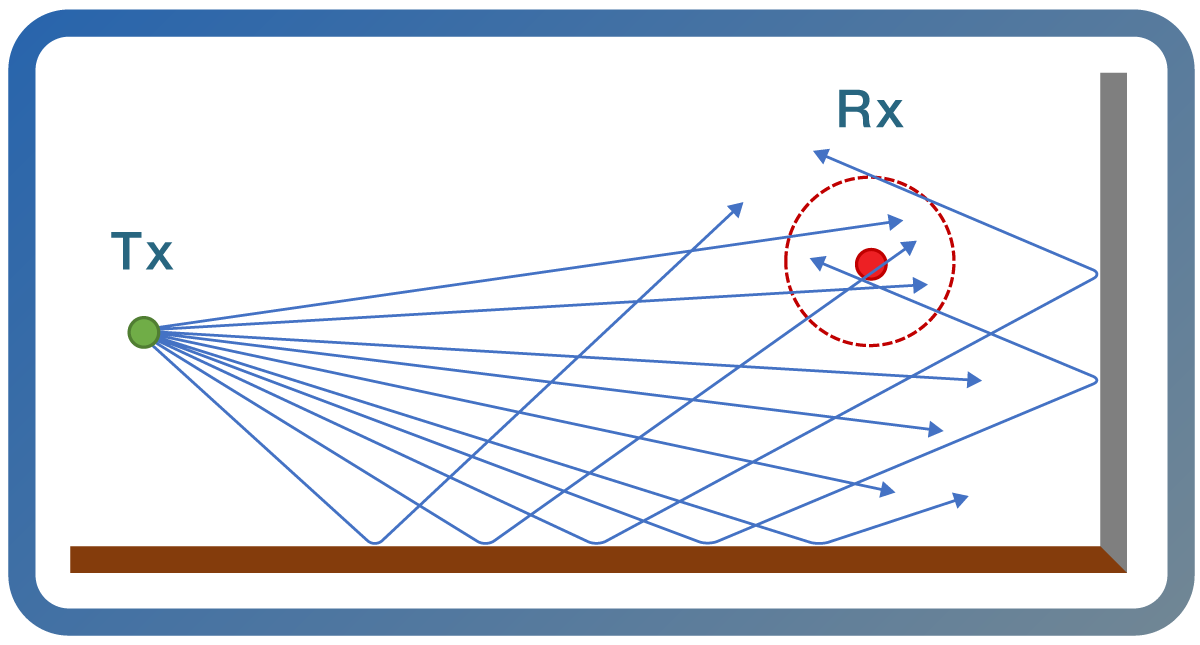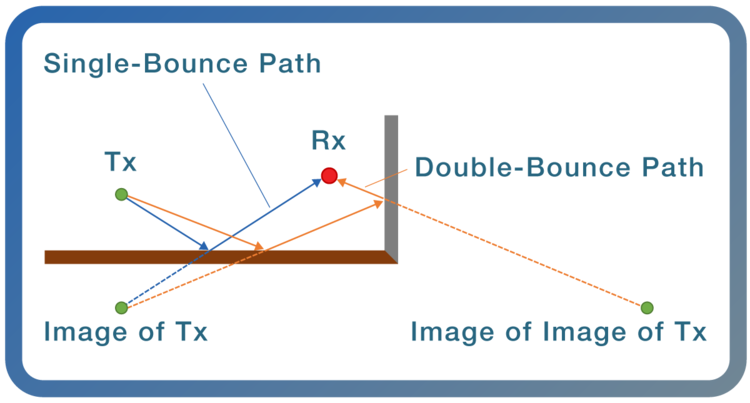Ray Tracing Simulation & Propagation Methods
Ray-tracing methods use discrete rays to represent advancing wavefronts as they propagate from a transmitter through a scene. Rays interact with geometry in the scene through reflections, diffractions, and transmissions. The two dominant ray-tracing methods are Shooting-and-Bouncing Rays and Image Theory. Remcom’s software combines these two methods to leverage the advantages of each.
Shooting-and-Bouncing Rays (SBR):
This approach shoots rays in all directions, usually with a fixed angular spacing, and follows them as they interact and split further into additional paths, reflecting from surfaces, transmitting through them, or diffracting from wedges.
Image Theory:
From a predefined pair of end points (e.g., a transmitter and receiver), this approach finds all of the paths between the points, using the method of images to determine where ray-tracing interactions will occur. The approach is then repeated for each subsequent pair of points in a calculation.


SBR is a relatively efficient approach for finding ray-tracing paths through a complex scene, but as rays propagate, they continuously spread, and they risk missing interactions with smaller objects while also incurring increasing error in the calculation of path length and phase. Image theory, on the other hand, is a more precise approach, but because it must be repeated for each pair of Tx and Rx points, it can be very computationally intensive in a scene with large numbers of facets and large numbers of transmit and receive pairs.
For these reasons, Remcom’s most advanced ray-tracing models in Wireless InSite® and WaveFarer®, which are based on the X3D ray-tracer, combine the two techniques. SBR is used to find the initial chains of interactions, using GPU-accelerated ray-tracing. Image theory is then used to perform an exact path correction (EPC), finding the precise paths between each point pair. The result is the capability to efficiently find propagation paths, while providing precise calculations of time of arrival, phase, and polarization. Precise estimates of these quantities have become increasingly important, if not required, for many current problems of interest, including MIMO analysis, fading due to mobility, and Doppler.
The way in which rays are traced and the propagation paths used depends significantly on the physics techniques that will be used to calculate the electromagnetic fields and power at receiver antennas. Two broad categories of techniques include (1) Geometric Optics and the Uniform Theory of Diffraction, and (2) Physical Optics augmented by the Method of Equivalent Currents or other similar techniques to adjust for edge effects.
